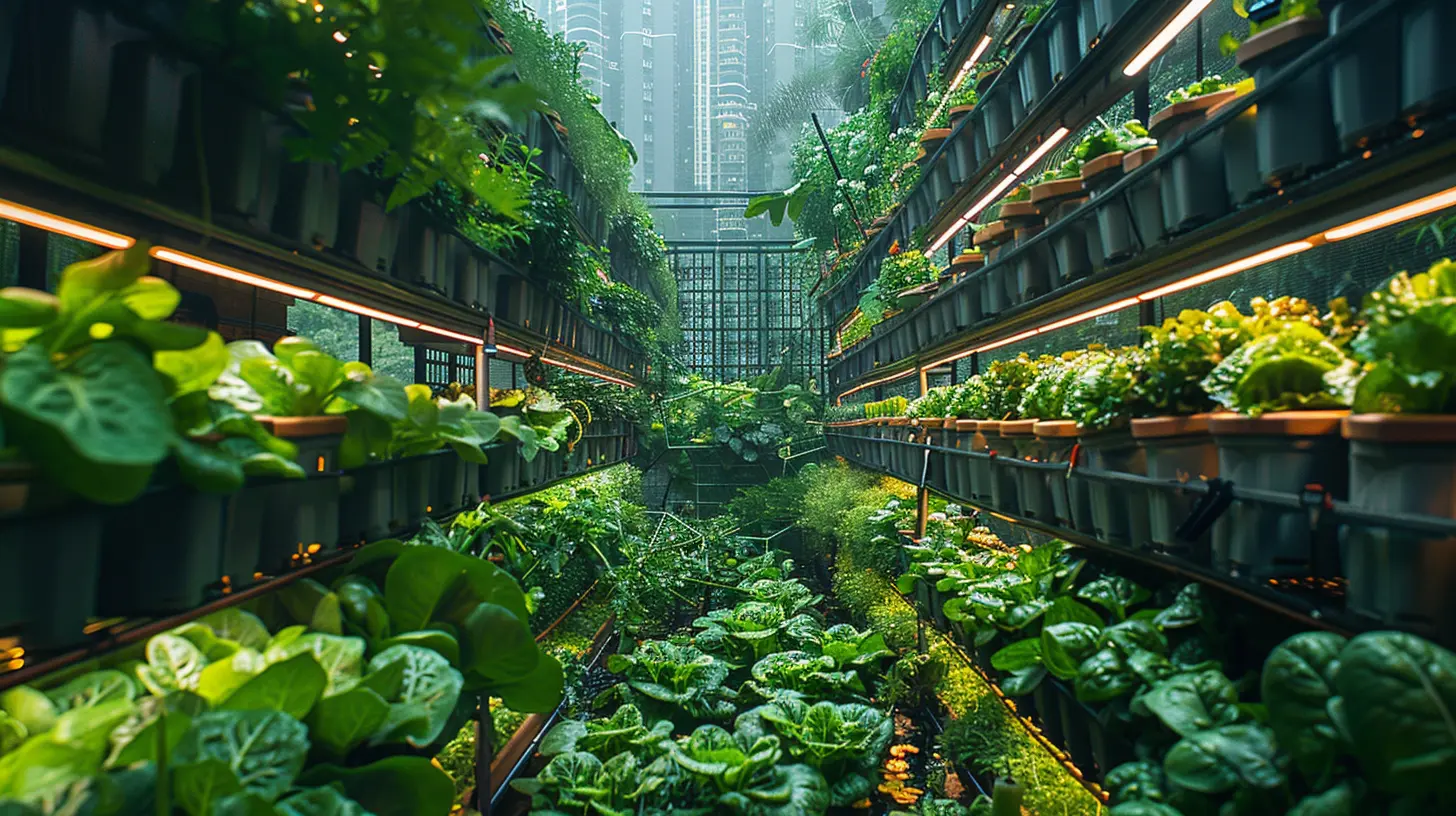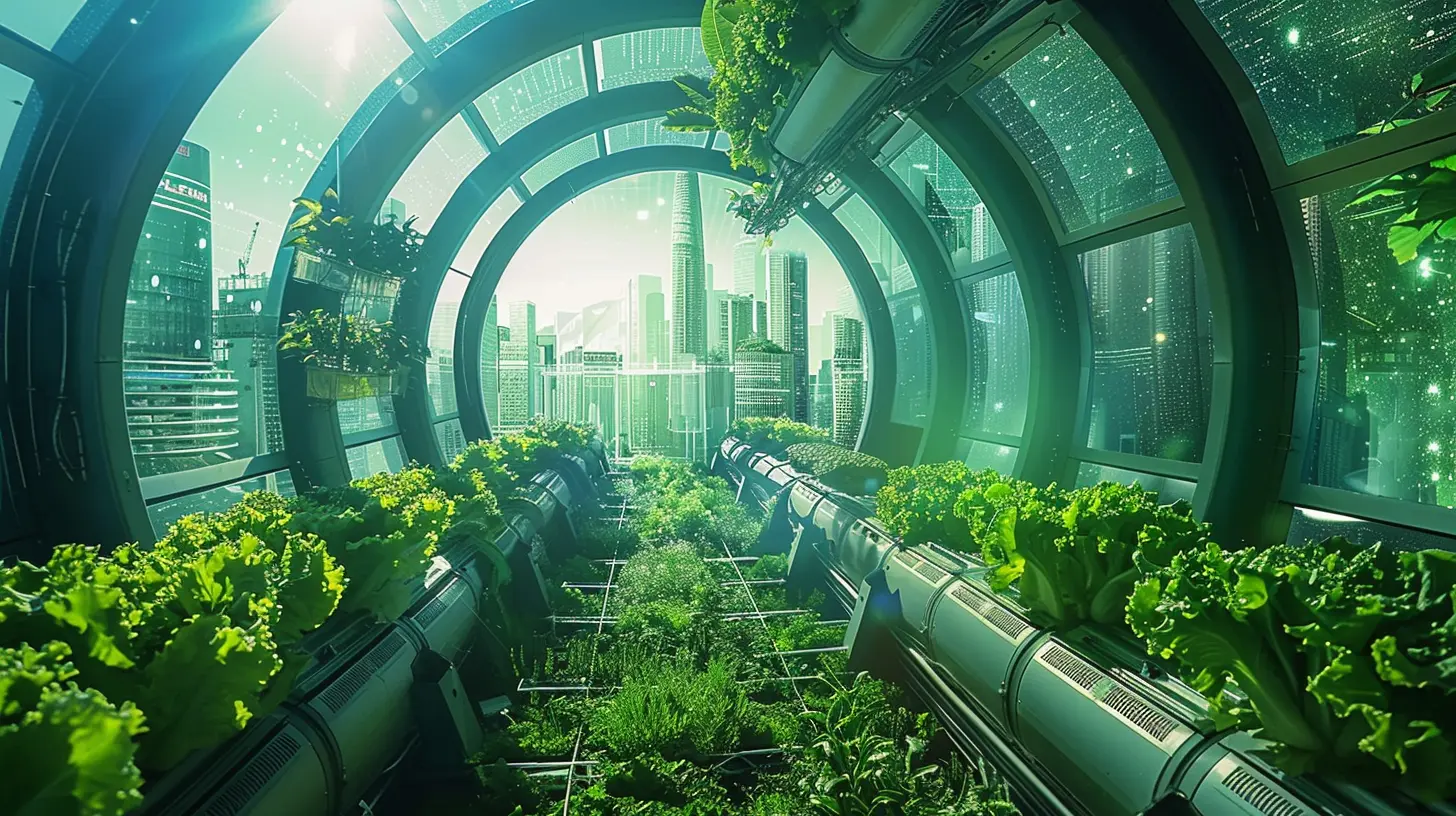Renewable Energy and the Future of Urban Farming
7 November 2025
The world is changing faster than ever. Our cities are growing, populations are booming, and so is the demand for fresh, sustainable food. But with limited urban space and increasing environmental concerns, how do we ensure food security without harming the planet? Enter renewable energy and urban farming—the perfect duo for a greener, more self-sufficient future.
Urban farming isn’t just a trendy buzzword; it’s a game-changer. Combine that with renewable energy, and we have a winning formula for a more sustainable world. But how does it all work? And more importantly, why should we care? Let's dive in.

The Rise of Urban Farming
What Is Urban Farming?
Urban farming, or urban agriculture, is exactly what it sounds like—growing food in the heart of cities. Whether it's community gardens, vertical farms, rooftop greenhouses, or hydroponic systems, urban farming is redefining the way we produce and consume food.But why is it becoming so popular? Simple. Traditional farming takes up a lot of land and resources, and as cities expand, farmland shrinks. Urban farming brings food production closer to consumers, reducing transportation costs, cutting emissions, and ensuring fresher, healthier produce right where people need it most.
Why Cities Are Turning to Farming
With climate change and food insecurity on the rise, urban farming is no longer a nice-to-have—it’s a necessity. Cities worldwide are looking for ways to make food production more sustainable and less dependent on long, inefficient supply chains. And given that more than 55% of the world's population lives in cities, this trend isn't slowing down anytime soon.But there’s one big challenge: farming requires a lot of energy. That’s where renewable energy steps in to save the day.

The Power of Renewable Energy
What Is Renewable Energy?
Renewable energy is energy that comes from natural, replenishable sources—like the sun, wind, and water. Unlike fossil fuels, which pollute the environment and contribute to climate change, renewable energy is clean, sustainable, and abundant.Common types of renewable energy include:
- Solar power – Harnessing energy from the sun
- Wind power – Using wind turbines to generate electricity
- Hydropower – Capturing energy from flowing water
- Geothermal energy – Tapping into heat from the Earth’s core
- Biomass energy – Converting organic material into fuel
So, how does this all connect to urban farming? Let’s break it down.

How Renewable Energy Powers Urban Farms
1. Solar-Powered Vertical Farms
Ever wondered how skyscrapers could grow food? Welcome to the world of vertical farming! These high-tech farms grow crops in stacked layers, often indoors, using LED lights and hydroponic systems.But here’s the catch—artificial lighting and water pumps need electricity. Enter solar energy. By installing solar panels on rooftops or integrating solar-powered LED lighting, urban farms can operate sustainably and lower energy costs.
2. Wind Energy for Greenhouses
Greenhouses are a great way to grow food year-round, but keeping them climate-controlled can be expensive. Wind turbines installed on city buildings or urban farms can generate clean electricity, powering ventilation systems, water pumps, and automated irrigation.3. Hydropower for Aquaponics
Aquaponics is a farming method that combines fish farming with hydroponics (soil-less plant growing). It’s a closed-loop system where fish waste fertilizes plants, and plants clean the water for the fish. But these systems require continuous water circulation.Small-scale urban farms near rivers or reservoirs can use hydropower generators to keep the system running efficiently while staying eco-friendly.
4. Geothermal Energy for Climate Control
Ever experienced extreme heat or freezing temperatures in the city? Imagine how that affects crops. Geothermal energy can regulate temperatures in urban farms by using underground heat to warm spaces during winter or cool them in summer. This ensures consistent crop production regardless of weather conditions.5. Biomass Energy for Waste Management
Cities produce tons of organic waste daily. Instead of sending food scraps to landfills, urban farms can convert waste into biomass energy, producing heat and electricity to power agricultural operations. It’s a win-win—less waste, more energy!
The Benefits of Combining Renewable Energy & Urban Farming
Now that we see how renewable energy fuels urban farming, let’s talk benefits.1. Lower Carbon Footprint
Traditional agriculture relies heavily on fossil fuels for transportation, fertilizers, and machinery. By embracing renewable energy, urban farms can significantly reduce greenhouse gas emissions, making food production cleaner and greener.2. Energy Independence
Urban farms powered by renewable energy can operate off-grid, reducing reliance on fluctuating electricity prices and fossil fuels. This ensures greater food security and stable operating costs.3. Fresher, Healthier Food
Locally grown food means fewer preservatives, shorter supply chains, and more nutritious produce. Plus, urban farms can customize crop production based on community demand, reducing food waste.4. Job Creation & Economic Growth
Sustainable urban farming creates green jobs in agriculture, renewable energy, and technology sectors. As more people embrace urban farming, cities experience economic growth and new opportunities for farmers, engineers, and entrepreneurs.5. Resilient Cities
The world is facing more natural disasters, food shortages, and environmental challenges. Cities that invest in renewable-powered urban farming become more self-sufficient, ensuring their people have access to fresh food even during crises.The Future of Urban Farming
So, what does the future hold for urban farming and renewable energy? In one word—innovation.Smart Urban Farms
With AI, IoT, and automation, urban farms will become even more efficient and self-sustaining. Smart sensors will monitor humidity, temperature, and nutrients, ensuring optimal growth conditions with minimal waste.Rooftop & Underground Farms
Cities will maximize unused spaces—rooftops, abandoned warehouses, and even underground tunnels—to grow food like never before. These unconventional farms will ensure year-round food production regardless of weather conditions.Energy-Sharing Networks
Imagine a city where all urban farms are connected to a renewable energy-sharing network. Excess solar energy from one farm could power another, creating a sustainable loop of clean energy and food production.
Final Thoughts
Urban farming and renewable energy are a match made in sustainability heaven. As cities expand and environmental challenges grow, combining these two forces can revolutionize the way we produce food while protecting the planet.The future isn’t just about growing more food—it’s about growing food smarter. And with renewable energy leading the charge, our cities have never looked greener.
So, the next time you see a rooftop garden or hear about vertical farming, remember: This isn’t just about fresh veggies—it’s about building a more resilient, sustainable world, one urban farm at a time.
all images in this post were generated using AI tools
Category:
Renewable EnergyAuthor:

Michael Robinson
Discussion
rate this article
1 comments
Leona Cooper
This article compellingly highlights the intersection of renewable energy and urban farming. By integrating sustainable practices, cities can enhance food security while reducing environmental impact. However, challenges in scalability and technology adoption remain crucial for realizing this potential.
November 7, 2025 at 4:36 AM

Michael Robinson
Thank you for your insightful comment! I appreciate your emphasis on the need for scalable solutions and technology adoption to fully realize the benefits of integrating renewable energy with urban farming.


